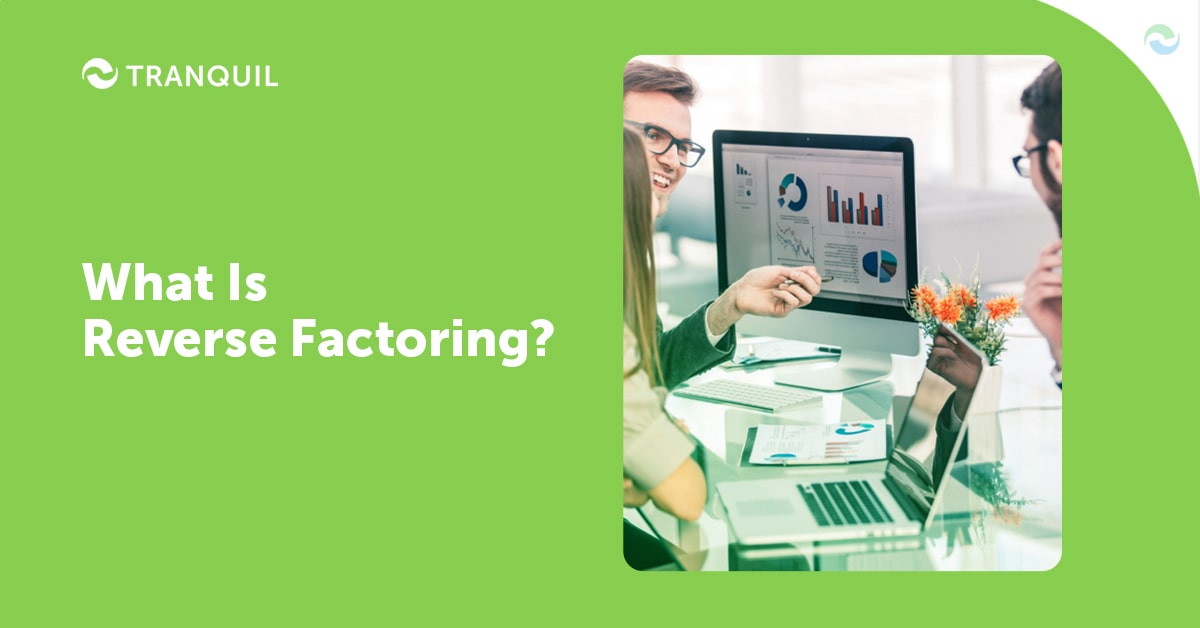
Every business needs finances to operate – buying raw materials or products, paying wages, rent, insurance, utilities, repairs, and so on.
The cash required for these activities is called working capital.
A small business that is on a growth trajectory will especially be in need of funds quickly for their expansion.
Wholesale business is usually conducted on a credit basis, where the purchaser is given a specific period – usually 30 days – to pay the amount.
A growing business may find it difficult, however, to wait for so long to get paid.
This is where reverse factoring comes in.
ALSO READ: Benefits of ERP in Accounting and Financial Management
Reverse factoring is also referred to as supplier finance or supply chain finance, and is a fintech solution that helps in mitigating the adverse impacts of prolonged payment terms.
It can help both vendors and buyers in optimizing their working capital.
This methodology connects financial institutions, vendors, and buyers, and helps to enhance cash flow, decreases risks in the supply chain, and offers predictable ROI for those supplying the funds.
We could say that it’s a type of supplier financing solution.
ALSO READ: Benefits of Bank Reconciliation in Accounting
Businesses can utilize reverse factoring and make payments earlier than the due date on specific invoices.
Vendors who participate in reverse factoring usually request the financial institution in question to make early payments against specific invoices, and the buyer makes payments on the maturity or due date to the bank or financier.
By facilitating vendor access to reverse factoring, buyers can lower the risk of disrupting their supply chain, and improve relationships with vendors, while bettering their working capital posture.
Reverse factoring programs may be offered either by one single bank or by platforms which facilitate several different financial institutions to offer funds.
A crucial thing to consider when implementing a reverse factoring program is reverse factoring accounting, or how you will treat it in accounting.
Businesses need to ensure that it is categorized not as a bank debt but a solution that is not included in the balance sheet.

The reverse factoring process involves several steps which we mention below:
ALSO READ: Ways To Do Budget Variance Analysis
Let’s face it, it’s a consumer’s world; especially in the corporate sector.
The buyer decides on payment conditions.
On the other hand, vendors are not willing to wait for ages to get money, since they have huge capital expenditures and working capital investments.
Moreover, they understand the tremendous opportunity for revenue and growth they have when they receive purchase orders from large corporations.
By entering into reverse factoring procedures, they can get their payments immediately instead of waiting for the maturity date of the invoice.
If we check the history, reverse factoring began in the automotive industry, as it enabled companies to operate more effectively with their suppliers, which were relatively small companies.
However, the reverse factoring market size is still small when compared to say, the factoring market.
ALSO READ: What is a Ledger in Accounting? Types and Formats of Ledger
Businesses seeking reverse factoring may be required to submit the following documents, though the requirements could differ for individual companies:
Now that we have seen what the term means and why it’s important, let us see what the benefits of reverse factoring are. Both vendors and buyers benefit from this technique.
ALSO READ: ERP vs CRM: Key Differences and Benefits

ALSO READ: What is a POS System?

This financing method is usually offered to those vendors with whom a business has been trading for a long time, and are therefore trustworthy.
You are not likely to offer this facility to a vendor with whom you are working for the first time.
It also takes some time to include a vendor into the reverse factoring system of any company.
This is a method that is normally employed by large businesses that is looking to make their cash flow situation better.
They need some time to convince a bank or financial company to get involved in this arrangement; the financiers are more likely to agree to extend this facility to large companies, as they have good credit ratings.
Small companies are generally not offered this facility.
Experts feel that reverse factoring facilities should not be offered to more than 50 vendors for a variety of factors; a huge reason being the intense administrative effort that will be needed for onboarding vendors into the system.
That, however, was the conventional viewpoint.
ALSO READ: How ERP Can Improve Business Efficiency?
Today, with robust software like Tranquil, companies can easily offer this facility to all their vendors.
This could be hundreds, thousands, or even tens of thousands of them when we talk about large corporations.
As small businesses who supply products to large businesses often find it nearly impossible to get funding at economical rates, offering all vendors reverse factoring can exponentially increase the benefits offered by this method.
For any reverse factoring system to succeed, it is essential that vendors are onboarded quickly and smoothly.
If the onboarding process is hassle-free, more and more entities will adopt it.
This process can be utilized by businesses in any industry; they just need to ensure that the purchasing company has a strong credit rating and that there is a robust relationship between the buyer and vendor.
It is usually seen in these industries:
Dynamic discounting is somewhat similar to reverse factoring; however, it’s not the same, and the two should not be confused with each other.
Dynamic discounting is another financing solution that allows buyers to make an early payment offer to the supplier.
However, here, the funding comes from the buyer and not a financial institution or bank.
In Dynamic discounting, the buyer negotiates for a discount for making early payments against their invoices.
Here the buyer uses their own cash to support supplier, get risk-free returns, and mitigate supply chain disruption risks.
ALSO READ: Complete Guide on Make to Order vs Make to Stock

Factoring and reverse factoring are two different methods of financing.
Factoring is a method of receivables financing, where a business discounts its invoices and sells them to a factor.
The customers of that company then make payment against those invoices to the factor or factoring company.
In reverse factoring, it is the buyer who initiates the program, and not the vendor.
Therefore, the financial institution charges an interest rate after taking into consideration the credit rating of the buyer rather than the vendor.
Usually, this leads to funding at a lesser cost than what the vendor could have hoped to get.
ALSO READ: Influence and Importance of ERP System in Different Industries
There are a few differences in the two methods.
Let’s check them out:
Vendors are willing to use factoring as it enables them to infuse cash into their business immediately – even if they get a slightly lesser amount.
The factor faces a slight risk as they have to collect the amount from the buyer of goods on the due date.
Usually, factors agree to deals only if they are confident that the buyer will pay for sure.
In essence, both methods help businesses in the supply chain get paid earlier and improve their working capital situation.
ALSO READ: On-Premise or Cloud Database Hosting: What’s Right for You?
Final Thoughts
While reverse funding is an ideal strategy for supply chains in numerous instances and offers benefits for all stakeholders like financiers, buyers, and vendors, it is still used quite rarely.
Most businesses find it easy to quickly sell off their invoices to third-party factors at discounts.
Reverse funding is a great method for companies that have a requirement for funds to be received in ten days; it is expected that the popularity of reverse factoring is set to increase in the near future, thanks to its numerous benefits.
Banks will be able to generate additional revenue streams if they make a stronger push for this financing method.
Tranquil ERP has a feature-packed finance module that can help you with factoring accounting, reverse factoring, or any other accounting process you may require.
It also provides other modules that help you run your business more efficiently and increase productivity.
If you have not yet implemented a cloud-based, scalable, flexible, secure, and affordable ERP, it’s time to switch to Tranquil Cloud ERP. But don’t just take our word for it – allow us to show you how we can help your business. Do schedule a free demo at a time of your convenience, and we will be happy to walk you through it and show you how it works. Our representatives will be available to answer all your queries regarding our software.